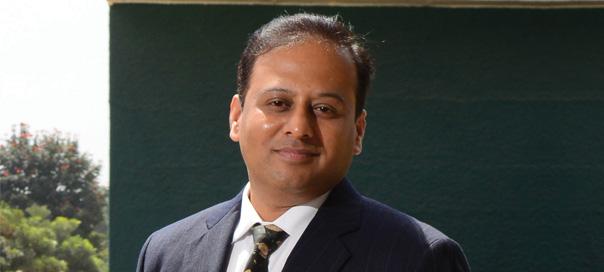By NEETA NAIR
The Himalaya Drug Company, one of India’s first companies to unleash ‘herbal power’ on consumers, has built year-on-year on its array of wellness products ranging from personal care, pharmaceuticals to baby care since 1930. It has come a long way, attempting to make a difference in the lives of its consumers. Now, it is going a step further, teaching people how to smile through its Muskaan campaign Says Rajesh Krishnamurthy, Business Head-Consumer Products, The Himalaya Drug Company, “Himalaya is a leading brand in lip care, especially in terms of volume. It was while working on our premium lip care range that we realized that though we can provide nourished and moisturized lips to our consumers, there are many who don’t even have proper lips to smile with. And that’s where an opportunity came to us, in the form of a partnership with ‘Smile Train Organization’, which has been improving lives of children born with cleft lips.”
Together, Himalaya and Smile Train Organization are hoping to conduct 100 cleft lip surgeries for the underprivileged across the country in a year, out of which 55 surgeries have already been completed. Talking about Himalaya’s role in this, Krishnamurthy says, “A contribution of Rs 2 from the purchase of every Himalaya Lip Care product will be made towards the cause. According to statistics, one out of every 700 children born has a cleft lip, so it adds up to around 35,000 children in a year. More importantly, underprivileged people in Tier II cities don’t know that the problem can be resolved with the help of a 45-minute surgery. Since July 2015, when we started the campaign, we have been creating awareness for it.”
But the question is, what took them so long to take the campaign to the mass media? Krishnamurthy replies, “We had to do a lot of groundwork in identifying the patients, getting the execution right, etc. We waited for the winter season to launch it aggressively because that’s when our consumers buy lip balm. So, we knew if we really need to make a change, then we had to reach out to our consumers in these months.”
So what kind of response are they getting for it? Krishnamurthy says, “On YouTube, we have already crossed 1 lakh views in such a short period of time. We became the No. 1 trending brand on Twitter when we launched Muskaan last month, and Himalaya Facebook has about 5 lakh views on it. We are going very heavy on digital media. In Radio, we have already aligned with 93.5 FM. At the moment, we are evaluating the use of conventional media - Print and TV. But, so far it’s purely on digital media.”
One of the most prominent brands in the herbal products category, Himalaya has seen a steady growth in business in the past few years, “We have grown by around 25% to 30% in the last three-four years and most of the growth has come from categories like face wash or shampoo and toothpaste. Now, these brands have grown in size because there are consumers who are inclined to try herbal solutions for their problems. Neem face wash is a classy example of that. In the face wash category, we are the No. 1 brand enjoying 23% to 24% market-share; in lip care, we have around 20% market-share, similar is the case in the face packs and scrubs category. About a couple of weeks ago, we have launched the first ever men’s neem face wash.”
Adding to that, Krishnamurthy says the brand has a very strong distribution network and is finding newer ways to appeal to all kinds of audiences. “We are present in more than a million stores across the country. So distribution wise, we are ensuring that our products are available not just in the urban areas but also in Tier II towns where there is high demand. Secondly, we are launching new variants of communication, tailor-made for the Tier II towns. For example, we recently launched a sachet for our face wash which is priced at Rs 5 because this enables a lot of potential consumers to try the product in Tier II towns. We are also tapping the regional TV channels, especially in the South where the penetration of categories like face wash is only 10% as compared to an average of 25% nationally. We have launched specific regional campaigns building on regional insights.”
Talking about the challenges the brand faces in the market today, Krishnamurthy says, “The challenge for Himalaya is how to sustain the growth momentum in view of the threat from competition. Second is identifying a brand personality for Himalaya which is there, but we need to find a way of building on that brand personality in view of so many players coming into the category.”
























